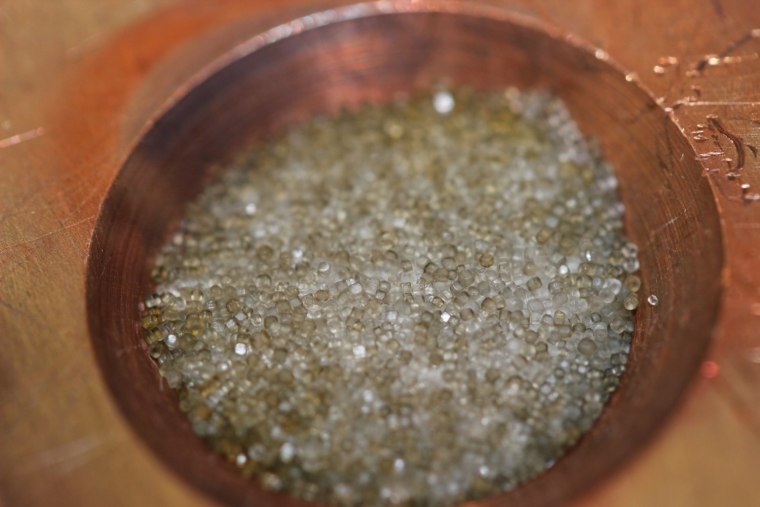Dark streaks on Jupiter's moon Europa are likely sea salt, implying conditions that favor life under its icy crust. But exploration of the frozen oceans may require a very strange, biologically inspired rover.
NASA scientists reported Tuesday that the mysterious streaks on the icy moon's surface are likely sea salt discolored by exposure to radiation. Kevin Hand and Robert Carlson of NASA’s Jet Propulsion Laboratory in Pasadena, California, used what they call a "Europa in a can" experiment to arrive at their conclusion. They simulated a patch of Europa's surface in a lab, mimicking its frigid temperature, pressure and radiation exposure conditions. They then subjected salt samples to this harsh, radiation-battered environment. The samples, which were initially white just like table salt, turned a yellowish-brown, similar to the dark color within the fractures on Europa, the scientists said.
The presence of sea salt on Europa's surface suggests the ocean is interacting with its rocky seafloor, scientists said. That could buttress the notion that the icy moon has the necessary ingredients to support life.
"We have many questions about Europa, the most important and most difficult to answer being is there life? Research like this is important because it focuses on questions we can definitively answer, like whether or not Europa is inhabitable," said Curt Niebur, Outer Planets Program scientist at NASA headquarters in Washington. "Once we have those answers, we can tackle the bigger question about life in the ocean beneath Europa's ice shell."

NASA has proposed a flyby mission of Europa that would launch in the 2020s, though there has been recent talk of also dropping a lander on the surface to poke around.
The most interesting parts of the planet may be the seas hiding beneath the ice. Exploring large bodies of liquid is an unprecedented challenge in space exploration, but researchers at Cornell University have been commissioned by NASA to pursue a unique solution as part of a series of grants.
Cornell's Mason Peck and Robert Shepherd propose a rover with a squid-like appearance, using its tentacles both to propel itself and to harvest power from local magnetic fields. Solar power, which powers the Mars rovers, can't be relied on that far out in the solar system, not to mention under a thick layer of salt, ice, and sediment.
Not only will this project advance the state of soft robotics in the space exploration sector, but it will also evaluate the possibility of electromagnetically-powered life, perhaps absorbing ambient energy the way plants absorb light.
It's very much in the planning stages now, however, much like any expedition to the surface of Europa. You can follow the squid-rover's progress at NASA's Innovative Advanced Concepts page, and the continuing research on Europa here.
